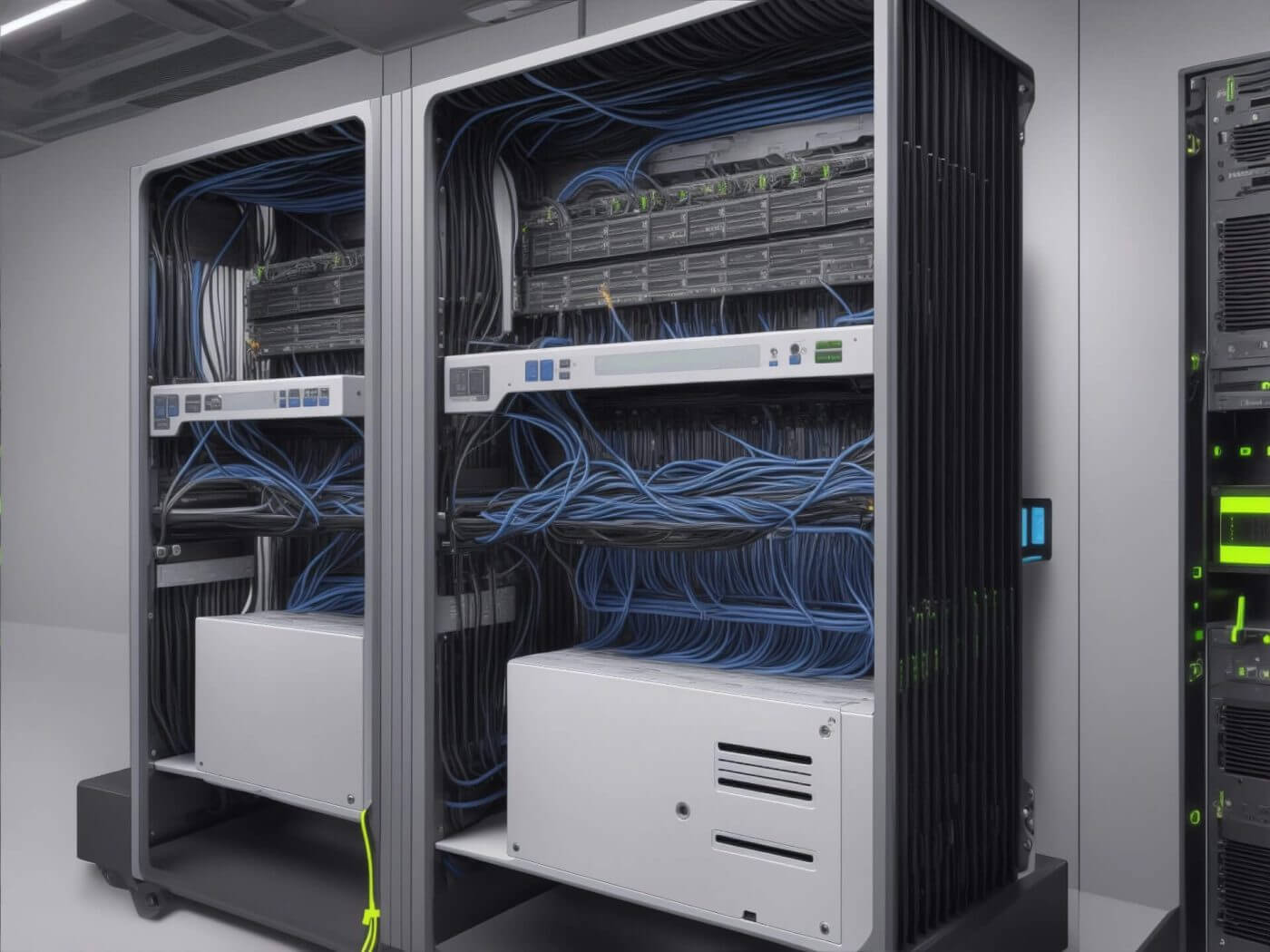In an increasingly digital world, protecting yourself from cyberattacks is more important than ever. With technology playing a crucial role in our daily lives and business operations, ensuring the security of our personal and sensitive information is imperative. This article will explore the future of cybersecurity and provide tips on how you can protect yourself from cyberattacks.

The importance of cybersecurity
As technology advances, so do the threats posed by cybercriminals. Cybersecurity is essential to safeguarding your personal information, financial data and confidential business documents. A breach in cybersecurity can result in identity theft, financial loss and reputational damage. Therefore, taking proactive measures to protect your digital assets is crucial.
Rise in cyberattacks
In recent years, there has been a significant rise in cyberattacks, targeting individuals, businesses and even governments. Cybercriminals employ various techniques, including malware, phishing scams, ransomware, and social engineering, to exploit vulnerabilities in computer systems and networks. The consequences of these attacks can be devastating, leading to data breaches, service disruptions and financial losses.
To protect yourself from cyberattacks, here are some key tips:
- Keep your software up to date: Regularly update your operating system, antivirus software and other applications to ensure they have the latest security patches.
- Use strong, unique passwords: Create strong passwords that include a combination of letters, numbers and special characters. Avoid using the same password for multiple accounts.
- Enable two-factor authentication: Enable two-factor authentication on your online accounts, whenever possible, to add an extra layer of security.
- Be cautious of phishing scams: Beware of emails, text messages or phone calls that ask for personal information or prompt you to click on suspicious links. Verify the sender’s identity before sharing any sensitive information.
- Educate yourself and stay informed: Stay updated with the latest cybersecurity threats and best practices. Educate yourself on common scams and techniques used by cybercriminals to better protect yourself.
By following these proactive measures, you can enhance your cybersecurity and reduce the risk of falling victim to cyberattacks. Remember, prevention is always better than cure when it comes to cybersecurity.
Understanding Cyberattacks
In today’s digital age, cybersecurity is more important than ever. With cybercriminals becoming increasingly sophisticated, it is crucial to understand the different types of cyberattacks and how to protect yourself from them.
Common types of cyberattacks
- Phishing: Cybercriminals use deceptive emails or websites to trick individuals into revealing sensitive information, such as passwords or credit card details.
- Malware: Malware refers to malicious software that is designed to disrupt, damage or gain unauthorized access to computers or networks. This includes viruses, worms, and ransomware.
- Denial-of-Service (DoS) attacks: DoS attacks involve overwhelming a network or website with excessive traffic, rendering it inaccessible to legitimate users.
Motivations behind cyberattacks
- Financial gain: Many cyberattacks are motivated by financial motives, as cybercriminals look to steal sensitive financial information, engage in identity theft or extort money through ransomware attacks.
- Espionage: Nation-states and other entities may launch cyberattacks to gain access to classified or sensitive information for political, military or economic purposes.
- Hacktivism: Some cyberattacks are carried out by individuals or groups with ideological or political motivations, aiming to disrupt or undermine organizations or governments.
To protect yourself from cyberattacks, it is essential to take preventive measures such as:
- Strong passwords: Use unique and complex passwords for all your online accounts and enable two-factor authentication whenever possible.
- Regular software updates: Keep your operating system, antivirus software and other applications up to date to patch any vulnerabilities.
- Be cautious online: Avoid clicking on suspicious links or downloading attachments from unknown sources. Be wary of phishing attempts and verify the authenticity of websites and emails before providing any personal information.
By staying informed and implementing these cybersecurity best practices, you can better protect yourself from cyberattacks and safeguard your digital assets.
Current Cybersecurity Landscape
The importance of cybersecurity has become increasingly evident as technology advances and cyber threats continue to evolve. It is crucial to stay informed and take proactive measures to protect yourself from cyberattacks. Here are some key points to consider in order to safeguard your digital life.
Cybersecurity vulnerabilities
- Weak Passwords: One of the most common vulnerabilities is the use of weak passwords. It is important to create strong and unique passwords for each online account and consider using a password manager to securely store them.
- Phishing Attacks: Phishing attacks involve tricking individuals into revealing sensitive information such as usernames, passwords or credit card details. Be cautious of suspicious emails, messages or websites asking for personal information.
- Outdated Software: Outdated software can create vulnerabilities that cybercriminals can exploit. Regularly update your operating system, web browsers, and software applications to patch any security flaws.
Latest cybersecurity threats
- Ransomware: Ransomware attacks encrypt your files and demand a ransom payment in exchange for restoring your access. To protect against ransomware, regularly backup your files and be cautious when opening email attachments or downloading files from unfamiliar sources.
- Malware: Malware refers to malicious software that can infect your devices and steal personal information or damage your system. Stay protected by using reputable antivirus software and avoiding suspicious downloads or websites.
- IoT Vulnerabilities: With the increasing use of Internet of Things (IoT) devices, there is a growing concern about the security vulnerabilities they present. Secure your IoT devices by changing default usernames and passwords, updating firmware regularly and ensuring they are connected to a secure network.
In conclusion, protecting yourself from cyberattacks requires a proactive approach. By staying informed, practicing basic cybersecurity measures and adopting smart online habits, you can significantly reduce the risk of falling victim to cyber threats.
How To Protect Yourself Against Cybersecurity Threats
In an increasingly digital world, the threat of cyberattacks has become more prevalent than ever. It is important for individuals to take proactive steps to protect themselves from these potential security breaches. Here are some key measures you can implement to safeguard your personal information and online presence.
Strong and unique passwords
- Create complex passwords: Avoid using common passwords such as “123456” or “password”. Instead, create unique passwords that include a combination of uppercase and lowercase letters, numbers and symbols.
- Use a password manager: Consider using a password manager tool that securely stores all your passwords. This way, you only need to remember one master password while ensuring all your accounts have strong and unique passwords.
Two-factor authentication
- Enable two-factor authentication (2FA): Many online platforms offer the option of enabling 2FA, which provides an extra layer of security by requiring a second form of verification, such as a fingerprint scan or a unique code sent to your phone, in addition to your password.
- Use biometric authentication: Where available, take advantage of biometric authentication options, such as fingerprint or facial recognition, to further enhance the security of your devices and accounts.
Regular software updates
- Keep your software up to date: Regularly update your operating systems, web browsers and software applications to ensure you have the latest security patches and bug fixes. These updates often address vulnerabilities that could be exploited by cyber attackers.
Taking these precautionary measures can significantly reduce your risk of falling victim to cyberattacks and protect your digital identity. Remember, online safety is a shared responsibility and staying informed about the latest security practices is essential in today’s interconnected world.
Safeguarding Personal Information
In today’s digital age, cybersecurity has become a pressing concern for individuals and businesses alike. With the increasing number of cyberattacks and data breaches, it is crucial to take proactive measures to protect yourself and your personal information online. Here are some key steps to follow:
Secure online transactions
When making online transactions, whether it’s purchasing products or transferring money, it is essential to ensure the security of your financial information. Here are some tips to keep in mind:
- Use trusted websites: Only make transactions on reputable websites that have secure payment gateways. Look for the padlock symbol in the web address bar, indicating a secure connection.
- Be cautious with personal information: Avoid sharing unnecessary personal details during online transactions. Retailers typically only require basic information such as your name, address and payment details.
- Enable two-factor authentication: Opt for services that offer two-factor authentication, which provides an additional layer of security. This may involve receiving a verification code via email or text message before completing a transaction.
Protecting sensitive data
Aside from online transactions, there are other ways to safeguard your personal information from cyberattacks:
- Use strong, unique passwords: Create strong passwords that include a combination of letters, numbers and symbols. Avoid using the same password for multiple accounts, as this makes it easier for hackers to access your information.
- Regularly update software: Keep your operating system, antivirus software and other applications up to date. Updates often include important security patches that help protect your devices from vulnerabilities.
- Be cautious of phishing attempts: Watch out for suspicious emails, texts or calls asking for personal or financial information. Avoid clicking on links or downloading attachments from unknown sources.
By following these steps to safeguard your personal information and practicing good cybersecurity habits, you can significantly reduce the risk of falling victim to cyberattacks and data breaches. Stay proactive and stay safe online!
Securing Internet of Things (IoT) devices
When it comes to the future of cybersecurity, one area that requires special attention is the security of Internet of Things (IoT) devices. With the ever-increasing number of connected devices in our homes and workplaces, it is crucial to understand the risks associated with IoT devices and how to protect ourselves from cyberattacks.
Risks of IoT devices
IoT devices are susceptible to a wide range of cyber threats due to their interconnected nature and often lax security measures. Here are some common risks associated with IoT devices:
- Weak passwords: Many IoT devices come with default passwords that are easy to guess or are never changed by the users, making them vulnerable to brute force attacks.
- Outdated firmware: Manufacturers of IoT devices sometimes fail to provide regular security updates and patches, leaving them vulnerable to known exploits.
- Lack of encryption: Encryption is vital to secure the data transmitted between IoT devices and their respective cloud servers. However, some devices lack proper encryption protocols, making them susceptible to data interception.
Tips for securing IoT devices
To mitigate the risks associated with IoT devices and protect yourself from cyberattacks, consider implementing the following measures:
- Change default passwords: Always change the default passwords of your IoT devices to strong, unique passwords that are not easily guessable.
- Keep firmware updated: Regularly check for firmware updates provided by the manufacturers and apply them promptly to ensure the latest security patches are in place.
- Enable encryption: If your IoT devices support encryption, ensure that it is enabled to protect the communication and data transmitted between the devices and the cloud.
- Segment your network: Create separate networks for your IoT devices and sensitive data, such as banking or personal information. This way, even if one device is compromised, the rest of your network remains secure.
- Use a firewall: Install a firewall to monitor inbound and outbound traffic from your IoT devices, allowing only legitimate connections to communicate with the devices.
By being proactive and implementing these security measures, you can protect yourself and your IoT devices from cyberattacks, ensuring a safer and more secure future in the realm of cybersecurity.
Educating Yourself and Others
In an increasingly digital world, the threat of cyberattacks is ever-present. It is more important than ever to educate yourself and others on the best practices to protect against these attacks. By taking the necessary precautions and spreading awareness, you can help secure your own personal information and contribute to a safer online community.
Cybersecurity awareness
One of the key steps towards protecting yourself from cyberattacks is to be aware of the potential threats and vulnerabilities. This includes understanding common attack methods such as phishing, malware and social engineering. Stay up-to-date with the latest cybersecurity news and trends. Be cautious when opening emails or clicking on suspicious links. By being aware of potential risks, you can take proactive measures to minimize your exposure.
Importance of sharing knowledge
It is not enough to protect only yourself, as cyberattacks pose a risk to individuals and organizations alike. By sharing your knowledge on cybersecurity best practices, you can help others in preventing and mitigating cyber threats.
- Educate your family and friends: Provide guidance on creating strong passwords, avoiding suspicious websites, and regularly updating software. Encourage them to use multi-factor authentication for added security.
- Promote cybersecurity awareness in your workplace: Engage in discussions about cybersecurity with your colleagues and superiors. Share relevant information and resources to help create a culture of security within your organization.
- Participate in community initiatives: Join or support local events and campaigns that promote cybersecurity awareness. This could involve giving presentations or workshops to educate others on the importance of protecting themselves online.
By taking the initiative to educate yourself and share your knowledge, you can play a crucial role in safeguarding against cyber threats. Remember, cybersecurity is a collective effort, and every individual’s contribution matters.
The Role of Businesses and Organizations
In today’s increasingly digital world, cybersecurity is a top concern for individuals and businesses alike. With cyberattacks becoming more frequent and sophisticated, it is crucial to understand how to protect yourself and your organization from these threats.
Cybersecurity policies and practices
One of the most important steps businesses and organizations can take to enhance their cybersecurity is to establish strong policies and practices. This includes implementing robust security measures such as firewalls, encryption, and antivirus software. Regularly updating and patching software and systems is also essential to protect against known vulnerabilities. Additionally organizations should conduct regular audits and risk assessments to identify any weaknesses and address them promptly.
Employee cybersecurity training
Employees play a vital role in maintaining cybersecurity as they are often the weakest link. Businesses and organizations should invest in ongoing cybersecurity training for their staff to raise awareness about potential threats and educate them on best practices for data protection. This includes training on identifying phishing emails, creating strong passwords and safely handling sensitive information. Regular reminders and updates should be provided to reinforce these practices.
Investing in cybersecurity measures is not only essential for protecting sensitive data but also crucial for maintaining business integrity and customer trust. By prioritizing cybersecurity and implementing robust policies and practices, businesses can minimize the risk of cyberattacks and safeguard their operations.
In conclusion, as cyber threats continue to evolve, it is important for individuals and organizations to stay vigilant and proactive in protecting themselves against cyberattacks. By implementing strong cybersecurity policies and practices and providing thorough training to employees, businesses can significantly reduce the risk of falling victim to these threats and ensure the security of their data and operations.
Conclusion
As technology continues to advance at a rapid pace, so do the threats lurking in cyberspace. It has become more crucial than ever to stay ahead of cybercriminals and protect yourself from potential cyberattacks. Here’s what you need to know about the future of cybersecurity and how to safeguard your digital presence.
Trends and predictions
The future of cybersecurity promises to be challenging and ever-evolving. Here are some key trends and predictions to keep in mind:
- Artificial Intelligence (AI) and Machine Learning (ML): Cybersecurity defense systems are incorporating AI and ML to analyze vast amounts of data, detect anomalies and identify potential threats in real-time.
- Internet of Things (IoT): As IoT devices become more prevalent, securing them becomes paramount. Vulnerabilities in smart home devices, wearables and connected cars pose significant risks, which cybersecurity measures need to address.
- Ransomware and Phishing Attacks: Cybercriminals are continuously refining their attack techniques, with ransomware and phishing attacks being prevalent. It’s vital to stay vigilant and educate yourself on recognizing suspicious emails, links and attachments.
Advancements in cybersecurity defense
To counter the increasingly sophisticated cyber threats, advancements in cybersecurity defense are being made. Here are some measures you can take to protect yourself:
- Strong Passwords and Multi-Factor Authentication (MFA): Create complex and unique passwords for each online account, and enable MFA whenever possible for an added layer of security.
- Regular Software Updates: Keep your operating systems, antivirus software and applications up to date to patch any vulnerabilities that cybercriminals may exploit.
- Security Awareness and Training: Educate yourself and your employees about cybersecurity best practices. Regular training sessions, phishing simulations and awareness campaigns can help prevent human error-based attacks.
By staying informed, adopting best practices and utilizing the latest cybersecurity tools, you can better protect yourself from cyberattacks in the future.

Bhetaludu has fresh tech news and cool travel tales. He covers gadgets and faraway places. His blog is for tech fans and those who love to explore.





